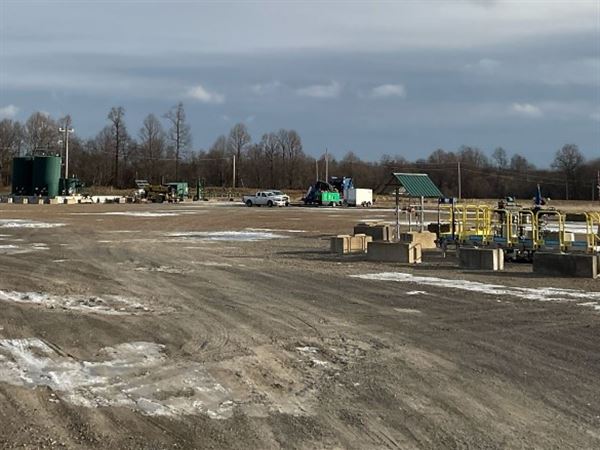Empty roadways. Empty restaurants. Empty movie theaters and shopping malls and schools.
On March 19, 2020, the world was grappling with the newly emerging Sars-CoV-2 virus. A day earlier, the state had seen its first COVID-related death. Then-Pittsburgh Mayor Bill Peduto announced the city was further restricting “face-to-face interactions” between city employees and residents. Across the country, as isolation set in, more people began reporting signs of depression.
Four years later, as the roads fill with commuters again and restaurants reopen for in-person dining, people have had to grapple with the rapid reorganization of their lives — first in the lockdown portion of the pandemic and then again as they emerged back into a changed world.
For many struggling with their mental health, the crisis and the rapid changes brought about during the recovery served to amplify deep-seated problems. The rates of depression and drug overdoses that spiked during the early days of the pandemic remain stubbornly, dangerously high.
“Loneliness, the anxiety and depression among the young, all this stuff started 10 years before COVID,” said Carol Graham, a senior fellow in the Economic Studies Program at the Brookings Institution. “We weren’t doing so well before. What COVID did, in addition to making things worse … it highlighted that we had these problems.”
During the early lockdown phase of the pandemic, restaurants shifted to takeout and delivery, while people met for outdoor walks instead of at kitchen tables — all of which is a testament to people’s adaptability, Ms. Graham said. But for those already struggling with mental health issues, the pandemic heightened the problems and years after that first lockdown, some people “are no better off.”
Between March 2020, when the initial lockdown began, and September 2022, at least 41% of adults experienced “high levels of psychological distress at some point,” according to surveys from the Pew Research Center.
For many, that has manifested in depression.
From early 2020 to early 2021, the percentage of Americans who say they’ve been told by a doctor or nurse that they’ve experienced depression shot up from 22.9% to 28.6%. Two years later, the survey found 29% had experienced depression — nearly 10 percentage points higher than in 2015, according to the polling firm.
Notably, national overdose rates “shot up” during the pandemic and have continued to rise, Ms. Graham said.
Allegheny County wasn’t spared from that trend. Fatal overdoses rose from 570 in 2019 to 688 during the first year of the pandemic. That number rose to 719 in 2021.
Though overdoses dropped the next two years — to 689 in 2022 and 629 in 2023 — they remained well above the county's 15-year annual average of fewer than 500 overdose deaths.
While part of that increase can be attributed to the rise of fentanyl-laced drugs, mental health has also played into it, according to Ms. Graham.
“We’ve had whole communities in despair for the past 10, 15 years,” she said. “Despair is a condition where you don’t care if you live or die; don’t care if you overdose.”
The isolation of the pandemic’s early months, paired with the loss of jobs and the closures of familiar hangouts like bars and restaurants exacerbated what was already a deep-seated, often overlooked crisis, Ms. Graham said.
But even with community organizations leading the efforts to combat the trend, unless “we pay more attention to it as a society” the disastrous mental health toll of the pandemic is likely going to persist, Ms. Graham said.
“COVID shined a very bright flashlight on these problems,” she said.
The front-line workers who have been combating this unfolding mental health crisis every day for years are doing so while still working to rebuild their hospital systems after enormous strains created by the greatest public health emergency the world had seen in a century.
When that emergency came, it grew at a devastating speed.
Four years ago Monday, the Allegheny County Health Department announced confirmation of a total of 12 cases of the virus. In less than a week, that number would grow to over 400 and continue to exponentially increase for months.
“There just weren’t enough people” working in the health care system to meet the demand of the pandemic, said Dr. Don Whiting, chief medical officer for Allegheny Health Network.
Hospitals around the country saw a wave of resignations among medical staff in 2021 as the need for care continued to climb and the staff who remained were stretched thin. Pittsburgh was no different.
“Everybody was dealing with it at the same time,” Dr. Whiting said. “There was no cavalry to come in from somewhere else. The magnitude of the destructive capability [of the pandemic] was beyond the capacity we had built for day-to-day operations.”
In a desperate race to adapt, health systems worked out ways to function during the darkest days of the pandemic. Some of those practices continue today.
“In this region, what we did especially well was come together,” Dr. Whiting said.
He, along with other chief medical officers in Western and central Pennsylvania created a group that still meets monthly.
“What we were able to do then was assess the magnitude of what the region was facing as a whole,” he said.
Now they discuss issues beyond the pandemic that the various health systems can work on together. Things like violence against health care workers is one of the group’s current focuses.
Allegheny Health Network is still on what Dr. Whiting called a “staffing journey” to ease the shortage of workers created by pandemic-induced burnout among overworked and mentally overtaxed hospital staff, but even that is beginning to work itself out.
The health system has a new digital nursing program, where some of the nurses work remotely to handle components of the job that don’t require in-person patient access, like medical charting or even handling virtual tele-health calls, he said.
“I truly think the world has realized that there are things that can come out of left field, and we need to always be prepared for new challenges in healthcare and other areas,” Dr. Whiting said.
Though the hospital system is past the “significant infectious stage,” it is still dealing with the lingering financial costs, Dr. Whiting said.
During the early stages of the pandemic, as health systems focused their resources where they were most needed, elective surgeries were suspended and people canceled routine checkups — both things that hurt the hospital systems’ bottom line.
Just under a year after the federally declared COVID emergency officially ended on May 11, 2023, the battered health care industry has seen a return to growth alongside the broader trend of a steadily recovering economy.
The Allegheny County Airport Authority recently reported that travel levels at Pittsburgh International Airport finally had surpassed pre-pandemic numbers. Tourism to Downtown Pittsburgh also has nearly recovered, according to data from the Pittsburgh Downtown Partnership.
And in a financial report from the fall, Allegheny Health Network’s former chief financial officer, James Rohrbaugh, said his organization was "continuing to see business grow."
But even as vaccines have drastically cut back on the mass hospitalizations that overwhelmed hospitals just a few years ago, the mental health emergency that surfaced during the pandemic continues to present a critical, ongoing challenge — not just to health care providers, but to people closest to those who are living in crisis.
“I think there is a lot more sensitivity to how much we need each other,” Dr. Whiting said. When the pandemic was at its most acute, “everybody came together because they realized we need to do the things we can to commonly support each other.”
Hallie Lauer: hlauer@post-gazette.com
First Published: March 19, 2024, 9:30 a.m.
Updated: March 19, 2024, 7:43 p.m.























